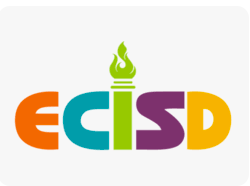Key points:
In today’s diverse educational landscape, fostering a culturally responsive and sustaining framework is paramount for school leaders. This framework acknowledges and values the cultural backgrounds, identities, and experiences of all students, creating an inclusive environment where every learner can thrive.
Understanding cultural responsiveness: Cultural responsiveness goes beyond surface-level diversity initiatives; it entails deep understanding, respect, and responsiveness to the unique needs of students from various cultural backgrounds. Key components include embracing diversity, promoting equity, and honoring the strengths of all learners. By prioritizing cultural responsiveness, school leaders can foster a sense of belonging and empowerment among students, teachers, and the broader school community.
Strategies for school leaders
Creating inclusive school environments: School leaders can establish a welcoming and inclusive school culture by celebrating diversity, promoting cultural awareness, and addressing biases and stereotypes. This involves implementing policies and practices that prioritize equity and ensure that all students feel valued and respected.
Providing professional development on cultural competence
Effective professional development on cultural competence is essential for equipping educators with the knowledge, skills, and mindset needed to engage effectively with diverse learners. This type of professional development goes beyond one-time workshops or surface-level training; it involves ongoing learning opportunities that promote deep reflection, self-awareness, and meaningful change in practice.
- Understanding implicit bias: Professional development sessions can begin by exploring the concept of implicit bias and its impact on teaching and learning. Educators can engage in activities and discussions to uncover their own biases and reflect on how these biases may influence their interactions with students. By developing awareness of their biases, educators can begin to interrupt and mitigate their effects in the classroom.
- Culturally responsive pedagogy: Professional development should delve into the principles and practices of culturally responsive pedagogy. Educators can learn about the importance of building on students’ cultural backgrounds, incorporating diverse perspectives into instruction, and creating learning experiences that affirm students’ identities and experiences. Through modeling and practice, educators can develop the skills to implement culturally responsive teaching strategies effectively.
- Cultural competence in classroom management: Classroom management is an area where cultural competence is particularly important. Educators can explore strategies for creating a positive classroom climate that values diversity, fosters respectful communication, and addresses conflicts or misunderstandings in culturally responsive ways. By establishing clear expectations and routines that are sensitive to students’ cultural backgrounds, educators can promote a sense of safety and belonging for all learners.
- Family and community engagement: Professional development should also address the importance of engaging families and communities in culturally responsive ways. Educators can learn about culturally appropriate communication strategies, strategies for building trust and rapport with families from diverse backgrounds, and approaches for incorporating families’ cultural knowledge and expertise into the educational process. By fostering strong partnerships with families and communities, educators can create a supportive network of resources and support for students.
- Reflective practice and continuous learning: Finally, professional development on cultural competence should emphasize the importance of reflective practice and continuous learning. Educators should be encouraged to reflect on their teaching practices, seek feedback from colleagues and students, and engage in ongoing professional learning opportunities. By committing to continuous growth and improvement, educators can deepen their cultural competence and better meet the diverse needs of their students.
Incorporating culturally relevant curriculum and instruction: School leaders can
advocate for the integration of culturally relevant materials, perspectives, and experiences into the curriculum. By offering diverse literature, culturally responsive pedagogy, and opportunities for student voice and agency, educators can create more meaningful and engaging learning experiences for all students.
Building relationships with students and families from diverse backgrounds: Establishing strong partnerships with students, families, and community members is essential for creating a culturally responsive school environment. School leaders can foster open communication, trust, and collaboration, ensuring that all stakeholders feel heard, valued, and included in decision-making processes.
Connection between SEL and culturally responsive teaching
- Social-emotional learning (SEL) and culturally responsive teaching share a symbiotic relationship, each enriching and reinforcing the other to create holistic educational experiences for students. Culturally responsive practices, which prioritize the social and emotional well-being of students, form the cornerstone of an inclusive and equitable learning environment. It is essential to recognize that the pedagogy of compliance, often characterized by rigid structures and rote memorization, does not effectively nurture the cognitive development and critical thinking skills necessary for academic success and lifelong learning. Instead, it is aligned with individualist cultural practices that prioritize conformity over creativity and independent thinking.
- In contrast, culturally responsive teaching embraces a pedagogy that honors the collective wisdom and diverse perspectives of students, fostering a collaborative learning environment where inquiry, exploration, and critical inquiry are encouraged. By integrating SEL competencies, including self-awareness, self-management, social awareness, relationship skills, and responsible decision-making, into culturally responsive teaching practices, educators can create supportive learning environments where students feel safe, valued, and empowered to succeed.
- Within collectivist cultural practices, the emphasis is often placed on collaboration, cooperation, and community harmony–values that resonate with the principles of social-emotional learning. By cultivating a classroom culture that celebrates diversity, promotes empathy, and values mutual respect, educators can harness the collective strengths and cultural assets of students to enrich the learning experience for all. In doing so, they move beyond the confines of the pedagogy of compliance to cultivate a dynamic and inclusive educational environment that nurtures the growth of students’ brain power and prepares them to thrive in an interconnected world.
Overcoming challenges: While fostering a culturally responsive/sustaining framework is crucial, school leaders may encounter challenges along the way. Addressing resistance or lack of awareness among staff, allocating resources effectively, and navigating complex socio-political contexts are common hurdles. However, by prioritizing equity, promoting dialogue, and seeking support from stakeholders, school leaders can overcome these challenges and create positive change.
Fostering a culturally responsive/sustaining framework requires commitment, collaboration, and ongoing reflection from school leaders. By championing equity, promoting inclusivity, and prioritizing the social and emotional well-being of all students, educators can create learning environments where every learner feels seen, heard, and valued. It is through this collective effort that we can build a brighter future for all learners, rooted in equity, justice, and cultural responsiveness.
References
Hammond, Z. (2015). Culturally responsive teaching and the brain: Promoting authentic engagement and rigor among culturally and linguistically diverse students. Corwin Press.
Ladson-Billings, G. (1995). But that’s just good teaching! The case for culturally relevant pedagogy. Theory into Practice, 34(3), 159-165.
National Education Association. (2017). Cultural competence in the classroom.
https://www.nea.org/assets/docs/CulturalCompetenceInTheClassroom.pdf
Nieto, S. (2002). Affirming diversity: The sociopolitical context of multicultural education. Pearson.
Sleeter, C. E. (1996). Multicultural education as social activism. Albany: State University of New York Press.
Tatum, B. D. (2003). “Why are all the Black kids sitting together in the cafeteria?”: And other conversations about race. Basic Books.





